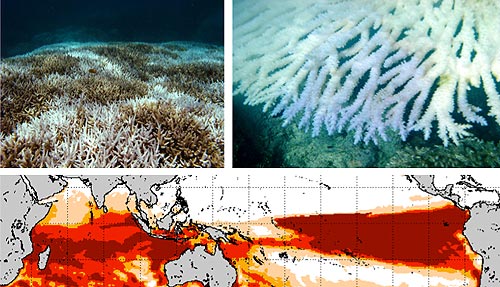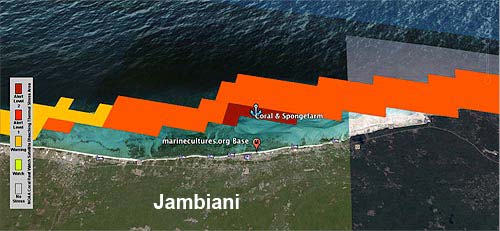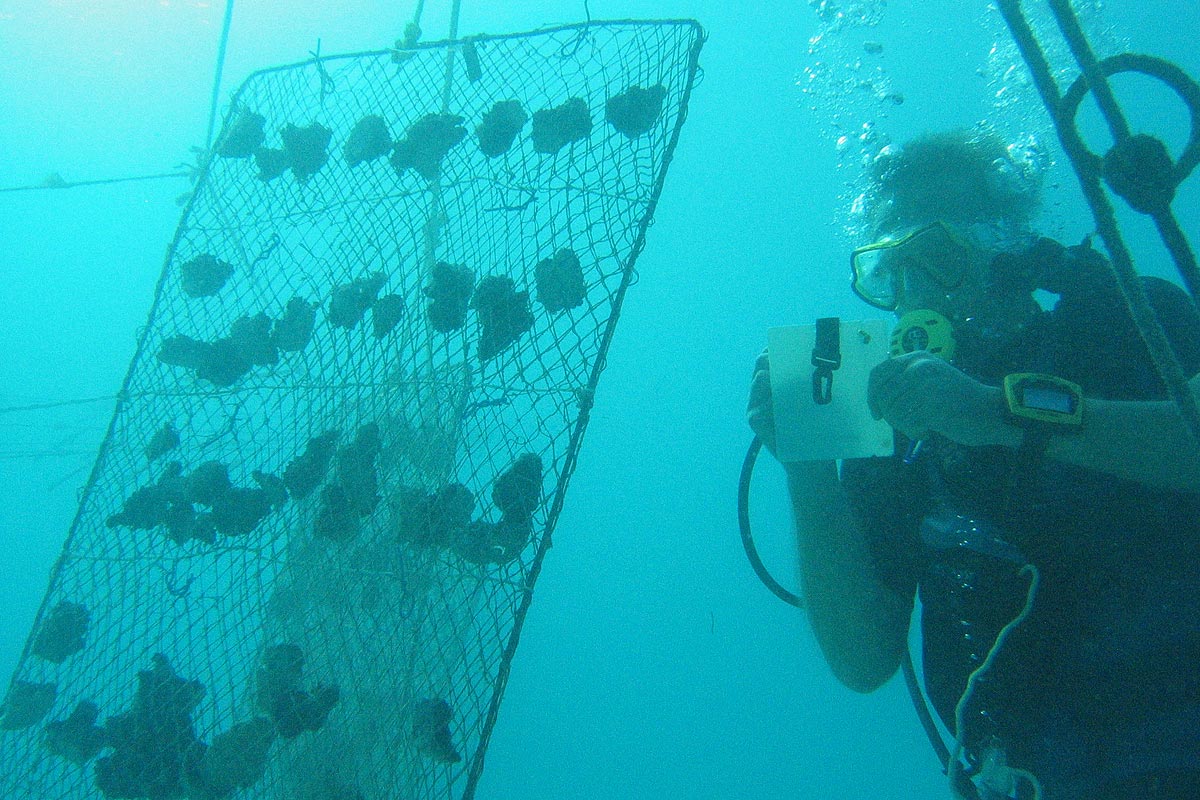El Niño threatens coral farms and reefs
18.11.2015
While the tropical Pacific is seeing the strongest occurrence of El Niño in 65 years, the coast of East Africa, the Seychelles, the Comoros and Madagaskar in the Indian Ocean too have seen high dangerously temperatures in recent weeks. First signs of much feared coral bleaching have been reported.

According to NOAA Coral Reef Watch Zanzibar is located in the second hottest region of the western Indian Ocean. Level 1 and 2 alerts have been issued for our coast for February.

Rot = Level 1: coral bleaching likely / Orange = Level 2: coral mortality likely
Because of the very shallow water during ebb tide, the risk of coral damage is particularly high in the Jambiani lagoon. We can only hope that our coral farm will not be affected too much. The lagoon is located in a Level 1 danger zone, though our farm is fortunately 5 to 7 meters below the surface and therefore a bit cooler. A year of development work and over 3,000 cultivated corals are in danger.

Little can be done about this. Our boat is too small to move our corals to the deeper waters of the outer reef. We urgently need a bigger one, not least also with a view to expanding our coral farming efforts.
However, we cannot sit by idly as these events unfold and have signed on with the Indian Ocean Commission’s multinational Coral Bleaching Monitoring project to document coral bleaching in Zanzibar. In a first phase we will identify two spots with good corals each in the Jambiani lagoon and the outer reef, and one spot each in Mtende on the South Coast and in Michamwi on the East cost and monitor them photographically. When we see the first signs of coral bleaching or dying corals we will document the damage every on a bi-weekly basis until the situation stabilizes. Our reports will be submitted to CORDIO, an organization that compiles and analyzes regional data for the global NOAA Coral Reef Watch. While this work will not save our corals this year, we hope that it will lead to a better understanding of the causes and effects of the El Niño phenomenon.


